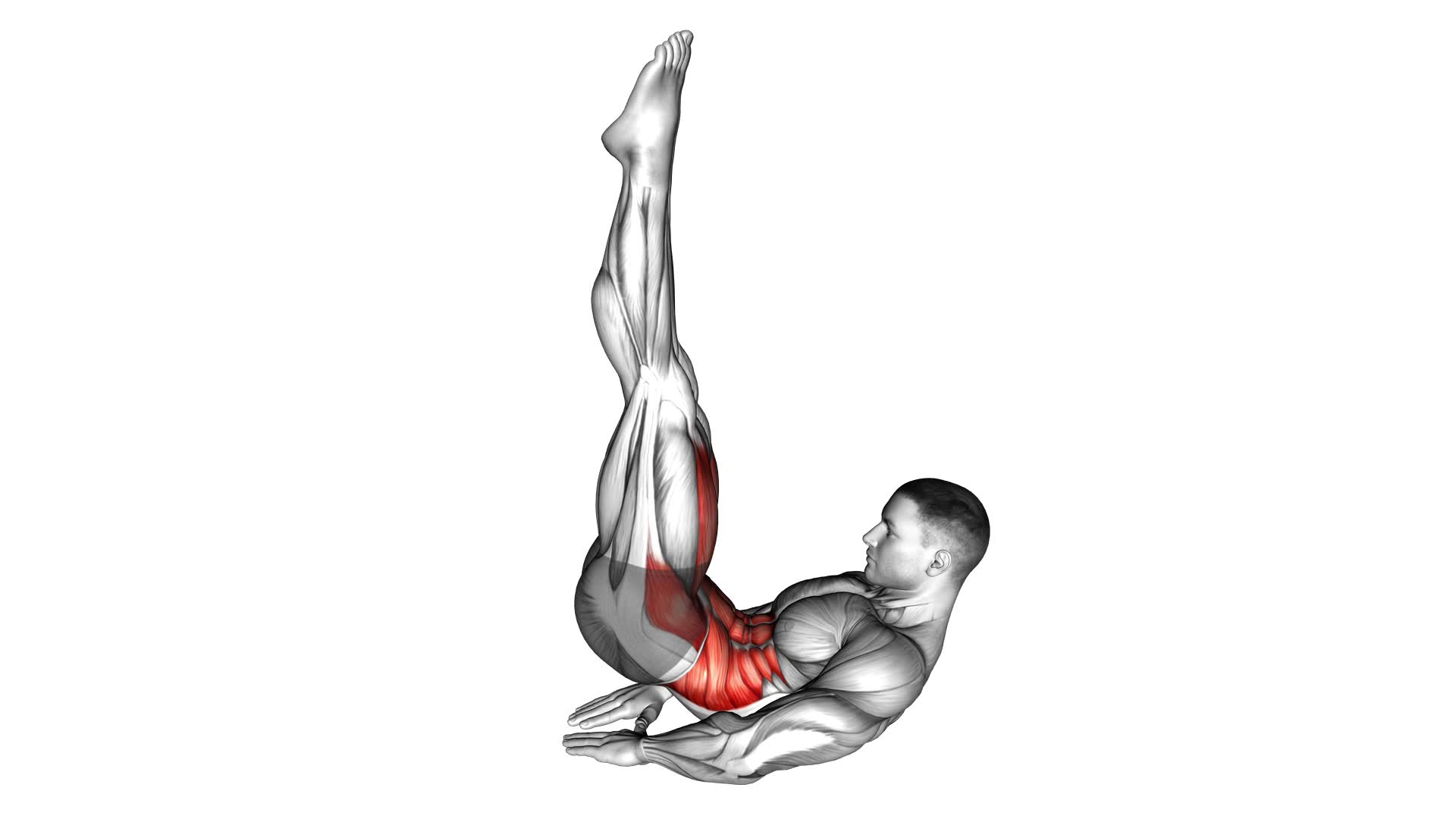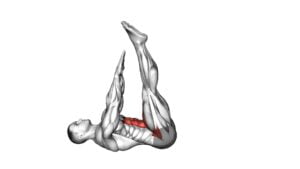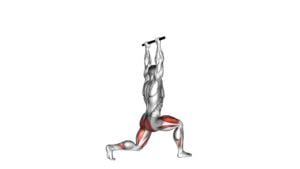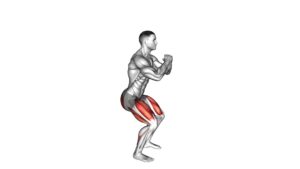Pulse-up – Video Exercise Guide & Tips

Get ready to take your fitness routine to the next level with pulse-ups! In this video exercise guide, we'll show you the proper form and technique to perform pulse-ups effectively.
Watch This Exercise Video
Whether you're a beginner or a seasoned fitness enthusiast, we've got modifications for all fitness levels. Plus, we'll share tips to maximize your pulse-up workout and avoid common mistakes.
Get ready to feel the burn and see results with our pulse-up guide!
Key Takeaways
- Pulse-ups can improve core strength and flexibility.
- Proper form and technique, including engaging the core and avoiding momentum, is important for effective pulse-ups.
- Common mistakes to avoid include using momentum instead of engaging core muscles and straining the neck.
- Modifications for different fitness levels include starting with knee tucks for beginners and adding leg raises or twists for advanced users.
Benefits of Pulse-ups
Discover the numerous benefits you can achieve through incorporating pulse-ups into your exercise routine. Pulse-ups are an effective exercise that can help improve core strength and increase flexibility. By targeting your abdominal muscles, pulse-ups can strengthen your core, which is essential for maintaining stability and proper posture. A strong core can also enhance your performance in other physical activities, such as running, weightlifting, or playing sports.
In addition to improving core strength, pulse-ups can also help increase flexibility. This exercise engages your hip flexors and lower back muscles, which play a crucial role in maintaining flexibility and range of motion in your hips. By regularly performing pulse-ups, you can enhance your overall flexibility and reduce the risk of injuries, especially in the lower back and hip areas.
Incorporating pulse-ups into your exercise routine is a great way to target multiple muscle groups simultaneously. Not only will it help strengthen your core and increase flexibility, but it can also contribute to overall body stability and balance. Remember to perform pulse-ups with proper form and gradually increase the difficulty as you progress. Consult with a fitness professional if you have any concerns or questions regarding this exercise.
Proper Form and Technique
To perform pulse-ups with proper form and technique, it's important to consistently practice and focus on engaging the correct muscles. Here are some tips to help you improve your core strength and incorporate variations for advanced users:
- Engage your core: Before starting the exercise, make sure to engage your core muscles by pulling your belly button towards your spine. This will help maintain stability throughout the movement.
- Control your movements: When performing pulse-ups, it's crucial to control your movements and avoid using momentum. Slowly lift your upper body off the ground, focusing on using your abdominal muscles to lift you rather than relying on your hip flexors.
- Maintain proper alignment: Keep your neck relaxed and in a neutral position throughout the exercise. Avoid straining your neck by pulling on it with your hands.
- Progression for advanced users: Once you have mastered the basic pulse-up, you can challenge yourself by incorporating variations such as weighted pulse-ups or pulse-ups on an unstable surface like a stability ball. These variations will target your core muscles even more and help you continue to improve your strength and stability.
Common Mistakes to Avoid
Now let's delve into some common mistakes to avoid when performing pulse-ups.
Proper execution of pulse-ups is crucial to prevent injury and maximize the effectiveness of the exercise.
One common mistake is using momentum to lift your legs instead of engaging your core muscles. Remember to initiate the movement from your abs, not your hips or legs.
Another mistake is lifting your head and shoulders off the ground too much, which can strain your neck and diminish the engagement of your abs. Instead, focus on lifting your shoulders just a few inches off the ground while keeping your neck relaxed.
Lastly, avoid arching your lower back excessively during the exercise. This can lead to lower back pain and decrease the effectiveness of the workout. To prevent this, engage your core and keep your lower back pressed against the ground throughout the movement.
By avoiding these common mistakes and ensuring proper form, you can perform pulse-ups safely and effectively.
Now that you know the common mistakes to avoid, let's move on to modifications for different fitness levels.
Modifications for Different Fitness Levels
As you progress in your fitness journey, it's important to understand the modifications available for pulse-ups based on your current fitness level. Whether you're a beginner or advanced, there are options to tailor this exercise to your specific needs. Here are some modifications to consider:
- Beginner Modifications:
- Start with knee tucks instead of full pulse-ups. This reduces the intensity and allows you to focus on form and technique.
- Use a stability ball or bench to support your lower back. This provides extra stability and makes the exercise more manageable.
- Perform pulse-ups with bent knees instead of straight legs. This reduces the strain on your lower back and engages your core muscles effectively.
- Intermediate Modifications:
- Increase the range of motion by extending your legs fully during the upward phase of the exercise. This challenges your core muscles even more.
- Add a weight plate or dumbbell on your chest to increase resistance. This intensifies the exercise and helps build strength in your abs.
- Try performing pulse-ups on an incline bench. This shifts the focus to your upper abs and enhances the difficulty level.
- Advanced Modifications:
- Add a leg raise at the top of the pulse-up. This engages your hip flexors and lower abs while challenging your core stability.
- Incorporate a twist at the top of the exercise, alternating between sides. This targets your oblique muscles and adds an extra challenge.
- Elevate your feet on a stability ball or suspension trainer. This increases the instability and forces your core muscles to work harder.
Remember to listen to your body and progress at a pace that feels challenging but not overwhelming. Consult with a fitness professional if you need further guidance on which modifications are suitable for your fitness level.
Tips for Maximizing Your Pulse-up Workout
To maximize your pulse-up workout, it's important to implement these tips for optimal results.
One way to maximize your pulse-up workout is to vary the exercise by trying different pulse-up variations. This will challenge your muscles in new ways and prevent plateaus.
Some pulse-up variations you can try include the bicycle pulse-up, where you pedal your legs in a bicycle motion while performing the exercise, and the double pulse-up, where you perform two pulses instead of one before lowering your legs back down.
Another tip for maximizing your pulse-up workout is to focus on engaging your core muscles throughout the exercise. By keeping your core tight and your abs engaged, you'll work your muscles more effectively and see better results.
Additionally, make sure to maintain proper form during the exercise. Keep your back flat on the ground, avoid swinging your legs, and use controlled movements.
Frequently Asked Questions
How Many Calories Can I Burn by Doing Pulse-Ups?
You can burn a significant amount of calories by doing pulse-ups. The number of calories burned depends on factors such as your weight, intensity, and duration of the exercise.
Pulse-ups are a high-intensity exercise that engages multiple muscle groups, helping you build strength and burn calories efficiently.
In addition to the calorie burn, pulse-ups also provide other benefits like improved core strength, stability, and flexibility.
Incorporating pulse-ups into your workout routine can contribute to overall fitness and weight loss goals.
Can Pulse-Ups Help Me Lose Belly Fat?
Pulse-ups can definitely help you lose belly fat. They target your abdominal muscles, including the rectus abdominis and obliques, which are key in toning and tightening your midsection.
By incorporating pulse-up variations into your workout routine, you can challenge your core muscles in different ways and keep your workouts interesting.
Compared to crunches, pulse-ups engage your muscles at a deeper level, leading to more effective fat burning and muscle building.
How Often Should I Do Pulse-Ups in a Week to See Results?
To see results from pulse-ups, you need to do them consistently. The best time to do pulse-ups is during your workout routine. Aim to incorporate pulse-up variations into your routine at least three times a week.
This will allow your muscles to recover and grow stronger. By regularly challenging your core with pulse-ups, you'll start to see improvements in your abdominal strength and definition.
Remember to maintain proper form and gradually increase the intensity as you progress.
Can Pulse-Ups Help Improve My Posture?
Pulse-ups can definitely help improve your posture. By engaging your core muscles, pulse-ups promote overall strength and stability in your body, which in turn can lead to better posture.
To maximize the benefits, make sure to maintain proper form during pulse-ups. Keep your back straight, shoulders down, and engage your abs throughout the exercise. Remember to breathe properly and start with a comfortable pace.
Consistency and proper form are key to seeing results.
Are Pulse-Ups Suitable for People With Lower Back Pain?
If you have lower back pain, you might be wondering if pulse-ups are suitable for you. Pulse-ups can actually be modified to accommodate your needs and help alleviate your pain.
By engaging your core muscles and improving your overall strength, pulse-ups can benefit your posture and provide support to your lower back.
However, it's important to consult with a healthcare professional or a certified trainer to ensure that you're performing the exercise correctly and safely.
Conclusion
In conclusion, pulse-ups are a highly effective exercise for targeting your core muscles and improving overall strength and stability.
By following proper form and technique, avoiding common mistakes, and making necessary modifications based on your fitness level, you can maximize the benefits of this exercise.
Remember to listen to your body, take breaks when needed, and gradually increase the intensity of your pulse-up workout for optimal results.
Stay consistent, stay determined, and enjoy the benefits of this challenging yet rewarding exercise.

Author
Years ago, the spark of my life’s passion ignited in my mind the moment I stepped into the local gym for the first time. The inaugural bead of perspiration, the initial endeavor, the very first surge of endorphins, and a sense of pride that washed over me post-workout marked the beginning of my deep-seated interest in strength sports, fitness, and sports nutrition. This very curiosity blossomed rapidly into a profound fascination, propelling me to earn a Master’s degree in Physical Education from the Academy of Physical Education in Krakow, followed by a Sports Manager diploma from the Jagiellonian University. My journey of growth led me to gain more specialized qualifications, such as being a certified personal trainer with a focus on sports dietetics, a lifeguard, and an instructor for wellness and corrective gymnastics. Theoretical knowledge paired seamlessly with practical experience, reinforcing my belief that the transformation of individuals under my guidance was also a reflection of my personal growth. This belief holds true even today. Each day, I strive to push the boundaries and explore new realms. These realms gently elevate me to greater heights. The unique combination of passion for my field and the continuous quest for growth fuels my drive to break new ground.



